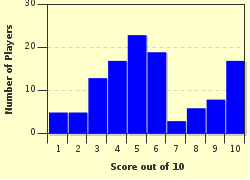Quiz Answer Key and Fun Facts
1. From Concord, this person was going to make history starting January 28, 1986. They made history alright, but not the history that was expected. Who were they and what was the historic event they were expected to make?
2. The New Hampshire state seal, modified in 1931, features a frigate. What's the name of the frigate?
3. This place is one of the oldest neighborhoods in the state and is located in Portsmouth and sounds like it should be the (English or foreign) name of a never released Beatles' song. What is it?
4. This man, who was born in Winchester, won the Congressional Medal of Honor and would create the Rough Riders during the Spanish-American War and was in command of the brigade of which the Rough Riders were a part during the Battle of San Juan Hill. Who was he?
5. Born in Newport, this woman played a major part in Thanksgiving becoming a national holiday. Among her published works are "The Good Housekeeper," "Northwood: A Tale of New England," and "Harry Guy, the Widow's Son. A Story of the Sea." Today children still learn one of her most memorable works, the nursery rhyme "Mary had a Little Lamb." Who is she?
6. What event between the Empire of Japan and the Russian Empire occured on September 5, 1905 in Portsmouth?
7. This was originally called Agiocochook, but ever since 1784 it has had a more familiar name. Which?
8. State law RSA 634:2 VI made vandalism of this, which President Eisenhower visited on its 150th birthday, a misdemeanor punishable by a fine of $1,000 - $3,000 and restitution to the state. It is one of the state's most visible images. What is it?
9. New Hampshire was the last state of the original thirteen to ratify the Constitution.
10. This city was originally the Plantation of Penacook and settled by immigrants from Massachusetts. In 1734 it was incorporated as Rumford but the name was changed in 1765 by Governor Wentworth. Though not the largest in the state, it is certainly one of the most important, if not the most important, as people like Judd Gregg, Henry Parkhurst, and Linda S. Dalianis could tell you. What city is it?
Source: Author
F6FHellcat
This quiz was reviewed by FunTrivia editor
bloomsby before going online.
Any errors found in FunTrivia content are routinely corrected through our feedback system.


